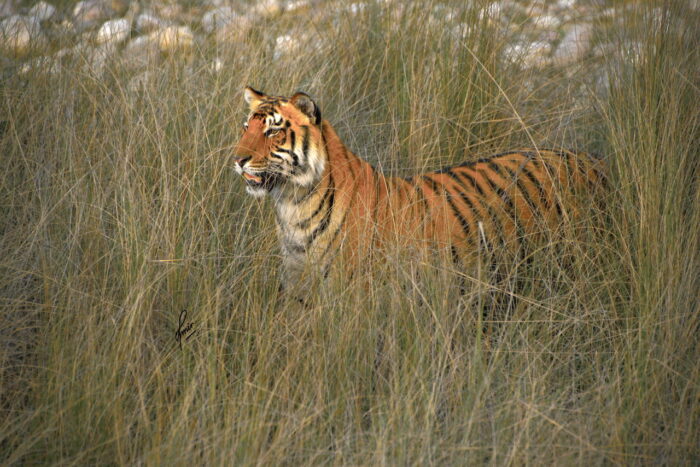
The recent emergence of Covid-19 represents a public health emergency of unprecedented enormity. A pneumonia of unknown cause detected in China was first reported to the World Health Organization (WHO) Country Office in China on 31 December 2019. Its origins were traced to the Huanan seafood market in Wuhan, in the capital of China’s Hubei province. The outbreak was declared a Public Health Emergency of International Concern (PHEIC) by WHO on 30 January 2020.
Here in a exclusive three – part series , the writer looks at the Challenges of Wildlife Conservation at the time of Coronavirus pandemic that has caused mayhem all over the world .
On 11 February 2020, the International Committee on Taxonomy of Viruses officially renamed the novel coronavirus (ie, previously 2019‐nCoV) responsible for the current outbreak of COVID‐19, as Severe Acute Respiratory Syndrome Coronavirus 2 (SARS‐CoV‐2).This virus causes a respiratory illness called COVID‐19, which can spread from person to person.
On 11th March, 2020, WHO made the assessment that COVID-19 can be characterized as a pandemic.Since 1995, the World Health Organization (WHO), has designated six outbreaks as a Public Health Emergency of International Concern (PHEIC). However, the scale and speed of the current outbreak has reached unprecedented levels.
As of 05:30 GMT, 23rd April 2020 there were 2,549,632 confirmed cases and 175,825 deaths across 213countries, areas or territories with cases(WHO 2020). It is history still in the making.
Adding a new dimension to the issue, Nadia a 4-year-old Malayan tiger at the Bronx Zoo was reported as the first confirmed case of a wild or domesticated cat to come down with Covid-19. The Bronx Zoo, in New York City, says the test result was confirmed by the National Veterinary Services Laboratory in Iowa. (Darryl Fears in the Washington Post 9th April 2020).
As on April 22nd, 2020, four more tigers and three lions at the Bronx Zoo have tested positive for coronavirus,
The same day, the U.S. Centers for Disease Control and Prevention (CDC) and the United States Department of Agriculture’s (USDA) National Veterinary Services Laboratories (NVSL) announced the first confirmed cases of SARS-CoV-2 infection in two pet cats. These are the first pets in the United States to test positive for SARS-CoV-2.
https://www.cdc.gov/media/releases/2020/s0422-covid-19-cats-NYC.html
COVID-19 and Wildlife Conservation:
From a wildlife conservation perspective, the major interest in COVID-19 stems from the belief that the virus responsible for COVID-19 originated from an animal found in an open-air food market in Wuhan, Hubei Province, China. The wild animal origin of both SARS and MERS have further lend strength to this.
Also, the infection of a tiger in a captive facility has raised questions about the future of in- situ and ex-situ wild populations.
In order to understand this emerging situation better, it would be useful to take a look at some similar incidents in the recent past.
SARS-CoV
A novel human coronavirus, Severe Acute Respiratory SyndromeCoronavirus (SARS-CoV) was first identifiedin 2002in the Guangdong Province, China. The disease reached epidemic proportions and caused about 8000 infections and 800 deaths worldwide by July 2003, by which time aggressive public health intervention strategies contained the epidemic absent any effective therapeutics(Bolles et al 2011).
Early epidemiologic investigations suggested an animal origin for SARS-CoV. Virological and serological studies indicated that masked palm civets ( Pagumalarvata ), together with two other wildlife animals, sampled from a live animal market were infected with SARS-CoV or a closely related virus. Recently, horseshoe bats in the genus Rhinolophus have been identified as a natural reservoir of SARS-like coronaviruses. (Wang &Eaton 2007)
MERS-CoV:
First reported in 2012, the Middle East Respiratory Syndrome coronavirus (MERS-CoV) marks the second known zoonotic introduction of a highly pathogenic coronavirus, probably originating from bats. Since human-bat contact is limited, camels have been implicated as probable intermediate hosts. While MERS-CoV appears to have been circulating in dromedary camels for over 20 years, the exact mode of transmission from camels to humans remains to be confirmed. A total of 2499 MERS cases and 858 associated deaths were reported to the WHO from 2012 to 30 November 2019. (Sharif-Yakan, A., &Kanj, S. S. 2014), (Contini et al 2020).
COVID-19
The COVID-19 virus has never previously been identified in humans. Its emergence and rapid spread represent an epidemiological storm. While it is near certain that COVID-19 came to humans through a wild host, scientists are still not sure what animal the novel coronavirus occupied before it made the jump into its first human victim in Wuhan, China. The “reservoir” population, where the virus is endemic, is almost certainly some kind of bat.
Recent research has reported that the SARS‐CoV‐2 virus likely originated in bats, a proposal based on the similarity of its genetic sequence to that of other known coronaviruses. In February 2020, two researchers (Shen Yongyi and Xiao Lihua) from the South China Agricultural University in Guangzhou identified the pangolin as a potential source of the SARS‐CoV‐2 virus based on genetic comparison of coronaviruses taken from pangolins and from humans infected during the recent outbreak. (Li, X et al 2020).
Some scientists have theorized that pangolins traded on the illegal wildlife market were an intermediate host that allowed the virus to infect humans.
Scientists have identified more than 200 coronaviruses in more than 1,000 bat species. Wet markets are where a wide variety of live animals are sold and consumed, and some in Wuhan consider bats a delicacy.
As is obvious from the above, three of the most impactful global diseases to have emerged in this century have a clear wildlife footprint. This brings us to the lesser known subject of Zoonoses, which are infectious diseases that can be transmitted from animals to humans. It has been estimated that over all, approximately 60% of recognised human pathogens are zoonotic, i.e. of animal origin. So it is not surprising that many of these relatively recent emerging infections can also be traced back to animals. Approximately 75% of the diseases that have emerged over the past two decades have a wildlife source.
Zoonoses or Zoonotic Diseases can be broadly classified as follows:
A- Where the disease is of animal origin and transmission from animal to human is rare but once this threshold has been crossed, the disease is maintained by human to human transmission, which maintains the infection cycle. HIV, Ebola and SARS are some examples.
B- Where the disease is of animal origin but the transmission to humans occurs mostly by direct contact. Animal populations continue to be the principal reservoir of such pathogens. Some examples are Lyssavirus, Lyme disease, Nipavirus and Hantavirus.
(Frédéric Keck and Christos Lynteris, 2018) .
Wet Markets and Human Health
This brings us to the “Wet Markets” which are in the spotlight post the Wuhan outbreak. Traditionally, a wet market is understood as one which sells live and/or dead specimens and products of poultry, fish and meat. In a regular wet market, the products would be largely of farm origin or harvested from the sea. However, in many countries meat from animals caught from the wild forms an important part of the diet of local communities and is also linked closely to their social and cultural practices. Thus, such Wet Markets provide an ample opportunity for intermingling of a wide diversity of wild species of often unknown provenance, with middlemen, traders and byers, often with the confines of tightly packed spaces. This environment would likely serve as a fertile cauldron for viruses from various species to meet , mutate and spread across species.
Contact with infected wild meat has also been found responsible for many past outbreaks of the Ebola virus (Borremans et al 2019).
It would also be important to note here that all trade in such wet markets may not necessarily be illegal, although the legal trade may also act as a cover for the illegal trade of many endangered and protected species.
It is thus evident that “Wet Markets” such as the Huanan seafood market in Wuhan, represent a very potent threat to human health and safety. Associated impacts such as that on global economy in the face of a pandemic, while colossal are considered secondary at this point.
(Samir Sinha is a Ph.D. in Wildlife Science and a Nehru-Fulbright Fellow. With nearly 25 years of hands-on experience in wildlife management, he has served previously as the Director of Corbett Tiger Reserve, Nanda Devi Biosphere Reserve and Rajaji National Park (now Rajaji Tiger Reserve), as also the Head of TRAFFIC-India. Views expressed here are personal, for academic interest and in no way claim to represent the official views of the Govt. of Uttarakhand or the Govt. of India.)
[the_ad id=’22723′]


















